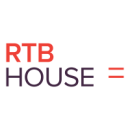If a manager of a remote team begins to notice team members are growing disengaged and communication lapses are more frequent, they need to remember this scientifically proven fact: Yawning is contagious.
While the connection between yawning and remote work may seem tenuous, a closer look at what makes the former contagious provides an intriguing perspective on the latter.
In the 1990s, researchers at the University of Parma in Italy studied the brains of macaque monkeys and found that specific neurons fired both when a monkey performed an action and when another monkey witnessed the same action — precisely what occurs when a yawn becomes contagious.
Since the discovery of mirror neurons, scientists have found their function is not only to mimic or replicate actions but also behaviors and emotions. When someone sees another person experiencing joy or pain and feels similarly, mirror neurons contribute to this reaction.
These neurons are not just an evolutionary quirk; they are thought to be crucial in fostering empathy, social learning and communication.
In a remote work environment, a lack of contagious yawning isn’t something to be concerned about. But the absence of organic connectedness and interaction from which people build empathy, community and understanding demands an attentive touch and proactive approach.
While managers don’t need to pay much credence to granular neurological processes, mirror neurons offer an unexpected lesson in what is lost when team members aren’t physically together. Without a strategy to fill communication gaps and create opportunities to build empathy and engagement, dispersed teams can become disconnected and misaligned.
At RTB House, Senior VP of Client Services Roy Ben Ezra has adapted his communication tactics to ensure his team members stay synchronized and motivated without the office’s organic avenues for connection.
Adtech company RTB House provides state-of-the-art marketing technology to brands through the world’s first ad-buying engine that uses Deep Learning algorithms to help advertisers reach their short-, mid- and long-term goals.
In your experience, what are the differences between managing in person at an office versus managing team members remotely? How have you tweaked your approach to the former to suit the latter?
When comparing managing in an office versus remote work, one of the main differences is that leaders and their teams are not visible to each other — in the most literal sense, but also when it comes to the leader’s ability to lead by example and create the desired team atmosphere.
There’s also less social interaction amongst team members at all levels. There is a concern that this could affect people’s commitment to an organization and their motivation to perform. That said, it’s essential to recognize that not all social interactions are equal or directly impact the organization’s success or satisfaction and happiness of its employees.
It’s essential to recognize that not all social interactions are equal or directly impact the organization’s success or satisfaction and happiness of its employees.”
As a manager, I strive to create the right employee atmosphere and ensure high motivation and performance. I have done this by developing a strategy appropriate for a remote setup. The keys to all this are communication, trust, delegation and creating processes that support asynchronous work, quality assurance and feedback.
How do you stay connected to your direct reports without bombarding them with communication?
For me, proactive communication is the key. This means understanding our clients and stakeholders’ needs and motivations and providing them with all the information they require to perform their best work before they even have to ask. I coach my team to apply these principles to communication with our internal clients, managers, direct reports and colleagues. This has allowed us to create a much less stressful environment where people don’t “bombard” each other because they simply don’t need to.
I focus on the right communication cadence by creating a structure for updates. Separating the planning phase from the execution phase allows for more predictability, which is critical for allowing people to manage their time and responsibilities. Having the right people involved in every conversation — including all relevant individuals and omitting irrelevant ones — allows smoother problem-solving and decision-making processes. It also helps to minimize distractions for people.
Life and business often throw curveballs, but you can significantly improve your chances of hitting a home run by minimizing distractions and noise and fostering consistency.
What advice do you have for leaders getting acclimated to managing a remote team?
Focus on setting the right expectations during the hiring process. This has always been true, but establishing standards with your new hires can take longer in a remote work environment. Create a robust new employee onboarding program that considers an extended ramp-up period. Provide them with opportunities to shadow other team members’ work so they see them in action and aren’t just learning the theoretical aspects of their job. Ensure you facilitate their interactions with their team members and anyone they’ll be working with early on.
Trust your people, but verify that they understand and are achieving. If you trust people, in most cases, they will develop a greater sense of ownership of their work, leading to higher performance and satisfaction. That doesn’t mean your job is done. For this system to be effective, you must also create processes to ensure a high quality of work and provide feedback.
Communicate openly with your team. Say what you mean and mean what you say. In a remote environment, your team has fewer opportunities to experience you as a leader, so consider how you use your time with them.







